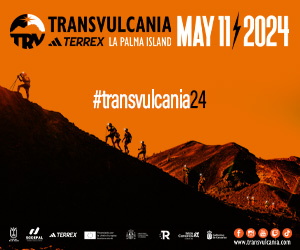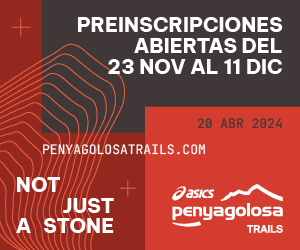 October
29
October
29
Tags
EIGER ULTRA TRAIL: MOUNTAIN RUNNIG AT THE EIGER (3967M) MÖNCH (4107) AND JUNGFRAU (4158) SHADOW’S. GRINDEWALD’S ULTRA RACE, SWISS ALPS
EIGER ULTRA TRAIL: Enjoy mountain racing around a dreamy landscape: the Eiger, the Mönch and the Jungfrau are three icons of the Swiss Alps.
Today we bring you a race from the heart of the Bernese Alps and one of the mountains that have created leyend in mountaineering: The Eiger and its North Face or Nordwand in German.
Continuing with last week chronicle about the Zusgpizt, we would like to share routes or mountain races from all around the world. This experience it is possible thanks to those who have opted to join the team as #patroncarrerasdemontana via
http://www.patreon.com/mayayo to support our work as a tester or an editor. Let’s go to the E51, Eiger 51km from inside.

EIGER ULTRA TRAIL: MOUNTAIN RUNNING UNDER THE EIGER (3967M), THE MÖNCH (4107) AND TEH JUNGFRAU (4158)
The Eiger Ultratrail, part of the Ultra-Trail World tour, brings together thousands of people from more than 70 nationalities every year.
This 2020 the race did not happen in the original planned distances by the causes already known by all, although, they organized the Surprise Trail 2.0, with 20 kilometers and 1300 meters of altitude difference that delighted the participants last 18th July. For those who were registered for this 2020, the organization offers two possibilities after the event cancellation: return 60% of registration or donate 100% of registration to the organization.
EIGER, THE CURSED MOUNTAIN:
The famous Eiger is 3,967m above Grindelwald, in the Bernese Alps in Switzerland, and has captivated visitors and mountaineers for decades, especially since 1858 when the local mountain guides Christian Almer and Peter Bohren, along with their Irish guest Charles Barrington, reached the top for the first time.
The mountain began to attract a lot of aspiring climbers from all over Europe first, and from the rest of the world after, even from places as the remote as Japan.
With that fascination for the mountain, some disasters arrived unfortunately, and a list of many mountaineers who lost their lives at the hands of the Eiger”. Caught up in this halo of myth and legend, the Japanese Maki Yūkō arrived in 1921, who on September 21 achieved the first ascent by the Mittellegi edge along with Fritz Amatter and Samuel Brawand.
The same Yūkō – San sponsorised in 1924 the construction of the Mittellegi Hut that is located at the Eiger ridge at 3355m, and continues to give shelter to mountaineers today. Later, in 1938, it was achieved, for the first time, the feared north face ascend (Nordwand in German) after a 4-day battle between 21 and July 24 by Anderl Heckmair, Fritz Kasparek, Ludwig Vörg and Heinrich Harrer.
Later, in 1969 a powerful group of 6 Japanese mountaineers: Michiko Imai, Takio Kato, Yasuo Kato, Susumu Kubo, Hiromufi Amano and Satoru Negishi achieved an epic activity. After a month in the wall between the months of July and August they manage to open a new route that surprises with its verticality and technical difficulty, especially in the section called Rote Fluh.
They were 200 meters very vertical and collapsed; a real challenge for that time that concluded successfully shaping the “direttisima”: VI, A2, 1,800 meters.
Closer to us in time, are the ascents of the north face along the classic Heckmair Route at full speed by the Swiss mountaineer Ueli Steck, who in 2007 managed to ascend in 3 hours and 54 minutes; who was improving his records in 2008 with 2 hours 47 minutes 33 seconds and 2015 pushing his body to the limit and managing to climb the wall of 1,800 m. elevation in 2 hours 22 min 55 seconds.

GRINDELWALD
The village of Grindelwald is located a few kilometres from Interlaken in the canton of Bern and is the main gateway to the well-known Jungfrau region. Easily accessible by land through the wonderful network of Swiss railways. From Spain you can fly regularly to Geneva or Bern and from there by train to Interlaken and Grindelwald.
It is a tourist village in which there is no seasonality, that is, whether winter, summer, autumn or winter: there are always visitors and there is always something related to the mountain to do. In winter, of course, most visitors opt for the multiple possibilities of winter sports, although there are also many tourists who only arrive at the place because of the picturesque of it.
One thing that can surprise the traveller is to see the amalgam of nationalities that visit its streets. Most shops have fluent Japanese and/or Arabic speaking staff, as many tourists come there either to emulate Japanese mountaineers, or to see snow for the first time.
GRINDEWALD, MECCA MOUNTAIN SPORTS.
As we said, Grindelwald opens the door to an entire region in which to enjoy from skiing, paragliding or to start a mountain skiing trip through the longest glacier in Europe: Aletsch (23 km long).
Whether it is winter or summer, ferrata tracks, sledding or mountain bike rides is one of the alpine areas with more natural and tourist resources that offers the visitor the opportunity to marvel at every step, either for the beauty of the landscape or for the beauty of the Alpine villages surrounding Grindelwald such as Lauterbrunnen and its waterfalls.
The ski resort “Jungfrau Region” is also a world reference. It has more than 200 kilometres of ski slopes, which are divided into three large areas: Grindelwald-Wengen, Grindelwald-First und Mürren-Schilthorn, and with of the Lauberhorn descent, they are part of the FIS-Alpine Ski World Cup.
Another curiosity left by this impressive alpine area is that it has the longest snow sledding descent in Europe, with almost 16 kms of descent for the most adventurous from the top of the Faulhorn at 2,681 meters above sea level (highest point of the Eiger Ultra Trail) to Grindelwald at 1,064 meters above sea level.
Below here, you can see a picture of the Eiger and Mönch from the Grindelwald-Wengen ski slopes. Luxury….

LAUBERHORNRENNEN – LAUBERHORN’S DESCENT TO WENGEN
Another thing that Grindelwald and his neighbour Wengen are known for is being part of the FIS-Alpine Ski World Cup. Thus, with almost 4.5 kms away, a percentage that goes up to 42% and about 1000 meters of negative elevation the descent of the Lauberhorn is one more famous, dizzying and fast of the worlds ski descent circuit.
Professional skiers ride it in about two and a half minutes, some of them marking descent times of up to 160 km/h. In 2020 and before the pandemic arrived it was able to celebrate his 90th birthday. The same route, but conversely it is one of the most famous hiking circuits in the area.
Below we leave you the magnificent track map of this ski resort in the heart of the Bernese Alps.
EIGER, MÖNCH AND JUNGFRAU, THE LEGEND OF THE OGRE, THE MONK AND THE MAIDEN
As in many other places in the world with mountains, legends and tales are part of popular culture and folklore. And with the Eiger (Ogre in German), it couldn’t be any other way.
Thus, once upon a time, in the Grindelwald valley, there was a beautiful maiden (Jungfrau) who walked carefree through the green alpine meadows until one day she ran into an Orge (Eiger), who upon seeing her was hopelessly in love with her and began to pretend to her. Although this Ogre, according to legend, was not an ugly being, full of warts, but a slender and strong young man.
In her attempt to escape, the beautiful maiden ran into a Monk (Mönch) who also inhabited these area and she, frightened by the persecution of the Ogre asked him for her help.
“Mr. Mönch, please help me, the Eiger chases me” — said the Maiden (Jungfrau)
“Eiger chases me because she wants me to be hers, but I don’t want to” — she continued.
The Monk replied, I do think I could help you, but you will have to pay a high price- to what the maiden agreed to.
At that moment, a great roar was heard in the valley, the roar became an earthquake and from them were born the Eiger, the Mönch and the Jungfrau.
Legend goes on to say that the Mönch 4107 m separates the Eiger 3967 m from the Jungfrau 4158 m so that the Ogre does not possess “her”, and over time they have become World Heritage Sites.

THE JUNGFRAUJOCH AND THE TRAIN THAT GOES UP TO 3500 METERS.
The Jungfrabahn or Jungfrau train is a railway that began to be built in 1896 and which after years of hard effort and sweat of the workers hired for this purpose, was inaugurated on August 1st, 1921. Today and for the small price of about 250€ it climbs in 9 kilometers the distance from Kleine Scheidegg at 2,061 meters above sea level to 3,454msnm of the Jungfraujoch.
The railway, dug on the north face of the Eiger, takes the traveller through two intermediate stops where through windows you can experience the verticality of the north face and admire glaciers that in other circumstances would be only reserved for the most experienced mountaineers. Stunning photography from the second intermediate stop at the Jungfraubahn at about 2,900 meters above sea level.

EIGER ULTRA TRAIL: A MODERN CLASSIC, BORN IN 2013.
Inspired by these myths, the Eiger Ultra Trail was born in 2013 by mountain veterans such as Ralph Naf and Werner Martí, among many other team members.
Year after year it has been consolidated as one of the must-do of the Ultra Trail World Tour and has seen athletes such as Jordi Gamito, Francesca Canepa, Erik Clavery, Diego Pazos, Pau Capell and Ulei Steck himself among others.
You’ll be amused by the race routes. They pass through some of the mythical places where the ascents to both the Eiger and the other three four thousand in the area begin: Grosse Scheidegg, First, Faulhorn, Schynige Platte, Wengen, Munnlichen, Kleine Scheidegg… All of them, as well as the route along the base of the north face of Eiger, offer a truly spectacular alpine experience. Here you can see theEiger north face and the Mittelegi ridge seen from the start lines of the Eiger Ultra Trail in Grindelwald.

EIGER ULTRA TRAIL: FIVE MOUNTAIN RACES.
Fully consolidated, the race offers up to five different routes so that all runners can adapt to the distance that is most suitable for them and enjoy the breathtaking views of the four thousand peaks of the area. The big race the E101, with 101km and 6700m of positive elevation; and the E51, 51km and +3,100m , have more than 30% foreign participation, with large quotas of runners arriving from Japan, China and the Netherlands. Departure is scheduled at 4:30 a.m. for E101, 7.15 for E51 and 10.00 for E35 and E16 respectively.
As a curiosity to tell you that the E51 race can be run in pairs whether male-male, female-female, male-woman and get a specific classification, in addition anyone who crosses the finish line in any of the modalities receives as a finisher medal a stone that has been collected on the north face of the Eiger.
EIGER ULTRA TRAIL: ROUTE & PROFILE
- E101 this is a complete tour around the Eiger, with101km+6700the organization announces it with the following motto: harder than climbing the north face alone!; Maximum time 25 hours
- E51 and E51 Couples with start and finishline in the village square of Grindelwald. 51km+3100; Maximum time 14 hours
- E35 Departure from Burglauenen and arrival to Grindelwald 36km 2,410 D+, maximum time 9 hours
- E16 with start and finishline in Grindelwald 16km+980; Maximum time 4 hours
ITRA points for the Ultra Trail Mont Blanc: The Eiger Ultra Trail is a qualifying race for the Ultra Trail du Montblanc. The king race (101kms) gives 5 points in ranking; the E51 and E51 Couples (51km) gives 3 points in the rankings; and E35 (35km) gives 2 points in the ranking and the E16 (16km) gives 1 points in the ranking.





E51 ULTRA TRAIL, FROM WITHIN: CHRONICLE BY HÉCTOR RUBIO.
In my case for two years, 2016 and 2017 I ran the E51. The race starts with two different schedules 6.45am for those who estimate will perform less than 8 hours and 7.15 for the rest.
The start is located in the middle of the village of Grindelwald, leaving behind us the slender shadow of the Eiger. After a couple of kilometers running we find ourselves in the middle of the alpine forest by a path that begins to scratch meters of positive elevation. Already with the first lights of the morning and on the way to the first aid station the beauty of the landscape discourages tiredness. Once we reach the first point aid station and after turning to the left of the path, I get the first Wooooo exclamation gesture: in front of all of us extend the Schreckhorn, the Mitellegi ridge, the Eiger and the Mönch.
EIGER ULTRA TRAIL, A CONTINUOUS SPECTACLE OF ALPINE BEAUTY.
However, the spectacle on the side of the valley we’re in, it’s still just as impressive, having in the background what will be the top and equator of the E51 race, the Faulhorn and its 2,680 m high. Once the athlete reaches the top of the Faulhorn and having overcome 700 m of unevenness in just 2 km begins a dizzying descent in which on the left are still present the giant four thousand and on the right you can see the lakes that separate the neighbouring Interlaken.
About kilometer 30 begins a dizzying descent through the forest that, through zigzags full of roots, in which the experienced downhill runners can scratch a few minutes to the clock.
After arriving to Burglauenen at kilometer 45 there are only 7km left by false plains on asphalt where the heat usually hits. In return, the well-known reward of the finish pushes the athlete to complete the last ascent of the day, They are just +150m that lead to the last 600 meters through the streets of the village, a crowded place with their cowbells makes for a moment forget the athlete the suffering it was needed to get there, Euphoric, again with the Eiger as witness will be able to cross the finish line and receive his long-awaited medal of finalist , a carved stone from the the Eiger north face.
In short, I see the Eiger Ultra Trail as a highly recommended race for any mountain runner, elite or popular.
For me, I’d come back again without hesitation. It would do so both for the level of professionalism that the organization puts and for the stunning views and landscapes that run through its different paths. If you’re popular, you’ll enjoy it with just that. If you are elite… you will have many good rivals with whom to compete in a great atmosphere.
PHOTO GALLERY BY THE ORGANIZATION




IF YOU LIKE WHAT YOU READ,
CLICK THIS BUTTON TO SUPPORT US IN PATREON.COM/MAYAYO
Posted by Héctor Rubio @hekruca for Trailrunningspain








